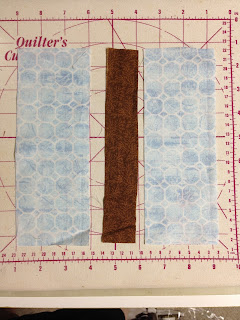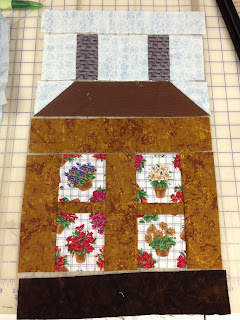Working on the Be My Neighbor Sew Along has been great. Bags, baskets and drawers of little bits, strips, and fabric ends have been hiding in the corners of my Studio and under my cutting table reproducing - I'm almost positive! Well it's time to clean the cobwebs!
It's been on my bucket list - a string quilt. So the spiders have inspired me to get started on the spider web block. This is a foundation piecing block. And I'm always looking for another way to use a ruler.

I pulled out my Cozy Quilt Designs Strip Tube Ruler and the EZ Dresden Ruler. (Both are available on my website if there are not already in your arsenal.)
The is a recycling, Use-It-Up project, so I dug into my computer paper recycling bin as well. Use scrap paper for a foundation for the strip piecing. With the Strip Tube Ruler as a template, I can get two triangles from an 8-1/2 x 11 inch sheet of paper.
Yes, a corner is missing, but there's enough to get the job done. I do not want to put a seam any closer to the corner because of bulky seam issues.
Using the center line of the ruler, make a small mark indicating the center of the long edge of the triangle (the hypotenuse for all you math geniuses!)
Draw a line from that mark to the corner.
Do the same for both triangles on the page.

Cut the sheet in half. Make lots more.
You can use scrap computer paper, old catalog pages, or newsprint, even old phone books.
Just make them all the same size.
Make as many foundations as you have scraps, or as big a quilt as you want.
I always go BIG and have A LOT of scraps and this will be an ongoing project - so stay tuned.
Next use you EZ Dresden Ruler to cut the center "kite" pieces which will form a star. These pieces will all be white or off-white / cream pieces. Cut 8 inch wedges. If you have a large enough piece of fabric, cut an 8 inch strip and cut wedges as shown below, flipping the template as you go. (Cut your pieces 8 inches, not six as in the picture.)
Let's go to the sewing machine. Lower the stitch length. Tighter stitches will make it easier to remove paper when completed.
Center a "kite" on the center line of paper foundation right side up. Place first scrap strip face down.
Seam width is not as important, but try to stay 1/4 inch along aligned edges.
Stitch.
Flip strip. Press. Repeat.
Keep adding strips until paper foundation is covered and looks something like this..
 I know, it looks like a HOT MESS! It gets better!
I know, it looks like a HOT MESS! It gets better!Flip the pieced triangle over, paper side up. Using your cutting ruler and rotary cutter, trim away uneven fabric edges.
Then it's looking a lot more like what we are shooting for! And we did't have to do any strange math calculations. Hurrah!
Here's two together! Now only about 80 more!
So stay tuned. I'll be working and the pile grows.
If you are one of those overachievers.......remove paper carefully so as not to stretch those bias edges. Sew triangles together forming quilt top. Quilt as desired and POST pics!
Happy Sewing!
KK

























